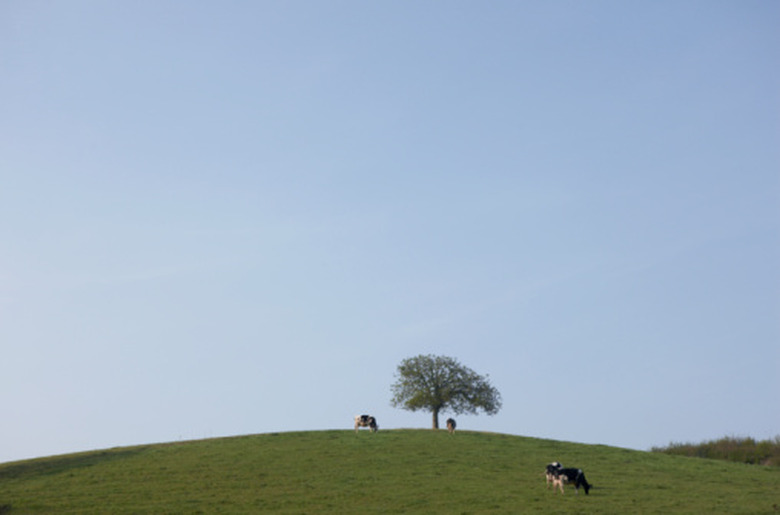How To Describe The Interdependence Of Living Organisms
Though living organisms may not be of the same species, they still can be dependent on one another. It is important to understand the interdependence of organisms, specifically living organisms, within an ecosystem in order to obtain a clearer understanding of the succession of biological life and symbiotic relationships.
Such relationships are also necessary to understand the importance of preserving wildlife. By analyzing the behavior of living organisms in their natural environment, you will be able to describe their interdependence.
Examples of Interdependence in Nature
Examples of Interdependence in Nature
Before you start describing the interdependence of living things that you study or see around you, it's important to understand examples in nature that you can model your observations off of. One example includes looking at food chains in your favorite environment.
Take the temperate forest, for example. Herbivores depend on plants growing and thriving in order to eat. Secondary and tertiary consumers that eat those herbivores thus also depend on those plants in order to fuel and support their prey species.
Besides food chains, shelter, nutrients and cover are all examples of interdependence in nature as well. In the temperature forest, birds rely on trees to create nests for their eggs.
Snakes rely on the leaves and ground coloration to camouflage themselves from both predator and prey. Trees rely on decomposers like worms and fungi to break down carrion and return necessary nutrients to the soil.
Step 1
Analyze the habitats of livings organisms. Animals use plants as a form of shelter within their environment. You can describe the interdependence of living organisms by stating how an organism builds its form of shelter.
For example, many birds reside within nests on the trees. They build their nests from twigs and sticks.
Step 2
Consider how plants come to inhabit different parts of the environment. Plants are stationary organisms; in order to pollinate different parts of the area, they depend upon the natural elements, such as wind and animals.
For example, the seeds of some plants can become attached to the fur of animals. When the animals move from one location to another, the seeds of the plant also become deposited in that new location.
Step 3
Understand the basic dietary needs of animals. Some animals are herbivores, so they need to eat plants in order to survive. Carnivores eat meat in order to survive. Omnivores eat both plants and animals.
Unlike plants, animals cannot make their own food. So they need the other organisms in order to obtain the needed energy.
Step 4
Analyze the different participants in food chains. Food chains involve producers, consumers and decomposers.
Without the producers, the consumers would not be able to obtain their food. Without the consumers, the decomposers would not be able to return the nutrients to the ecosystem. Without the decomposers, the producers would not have the needed nutrients to facilitate the process of growth.
Step 5
Provide an example of the symbiotic relationship of mutualism.
Mutualism is when two organisms both help one another in a form of interdependence. For example, the ants and the acacia tree form a symbiotic relationship of mutualism. The ants benefit by living in the acacia tree, and the tree benefits when the ants consume the insects that eat the leaves of the trees.
Step 6
Provide an example of the symbiotic relationship of parasitism.
Parasitism is a relationship in which one organism is helped while the other is harmed. An example is the tape worm. The tape worm obtains its nutrients while residing within the host, while the host is harmed because the tape worm absorbs all of the nutrients.
Things Needed
- Computer
- Biology book
- Pen
- Paper
Cite This Article
MLA
Pesacreta, Mara. "How To Describe The Interdependence Of Living Organisms" sciencing.com, https://www.sciencing.com/describe-interdependence-living-organisms-8442170/. 16 June 2019.
APA
Pesacreta, Mara. (2019, June 16). How To Describe The Interdependence Of Living Organisms. sciencing.com. Retrieved from https://www.sciencing.com/describe-interdependence-living-organisms-8442170/
Chicago
Pesacreta, Mara. How To Describe The Interdependence Of Living Organisms last modified August 30, 2022. https://www.sciencing.com/describe-interdependence-living-organisms-8442170/
